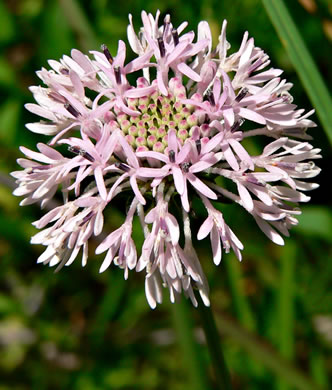Spermatophytes (seed plants): Angiosperms (flowering plants): Eudicots: Core Eudicots: Asterids: Campanulids: Asterales
WEAKLEY'S FLORA OF THE SOUTHEASTERN US (4/24/22):
Marshallia mohrii
FAMILY
Asteraceae__
Go to FSUS key
Dig deeper at SERNEC, a consortium of southeastern herbaria.
SYNONYMOUS WITH
PLANTS NATIONAL DATABASE:
Marshallia mohrii
FAMILY
Asteraceae__
SYNONYMOUS WITH Flora of North America north of Mexico, vol. 19-20-21 (2006)
Marshallia mohrii
SYNONYMOUS WITH Manual of the Southeastern Flora (Small, 1933, 1938)
Marshallia mohrii
COMMON NAME:
Coosa Barbara's-buttons
To see larger pictures, click or hover over the thumbnails.
Richard and Teresa Ware rtw_m_mohrii_coosa11
June
It somewhat resembles M. grandiflora, but typically has 2-10 heads per plant, per Weakley's Flora (2022).
Richard and Teresa Ware rtw_marshallia_mohrii
August
Members of this genus are glandular-dotted perennials w a peduncle over 5cm, per Wildflowers of the Eastern United States (Duncan & Duncan, 1999).
WEAKLEY'S FLORA OF THE SOUTHEASTERN US (4/24/22):
Marshallia mohrii
FAMILY
Asteraceae__
SYNONYMOUS WITH
PLANTS NATIONAL DATABASE:
Marshallia mohrii
FAMILY
Asteraceae__
SYNONYMOUS WITH
Flora of North America north of Mexico, vol. 19-20-21
Marshallia mohrii
SYNONYMOUS WITH
Manual of the Southeastern Flora (Small, 1933, 1938)
Marshallia mohrii
If a search such as "Carex leptalea var. leptalea" doesn't deliver the results you want, try "Carex leptalea".
Or, to minimize chances of a misspelling, try just "Carex le".
Less is more: If "pencil flower" doesn't deliver the results you want, try "pencil".




